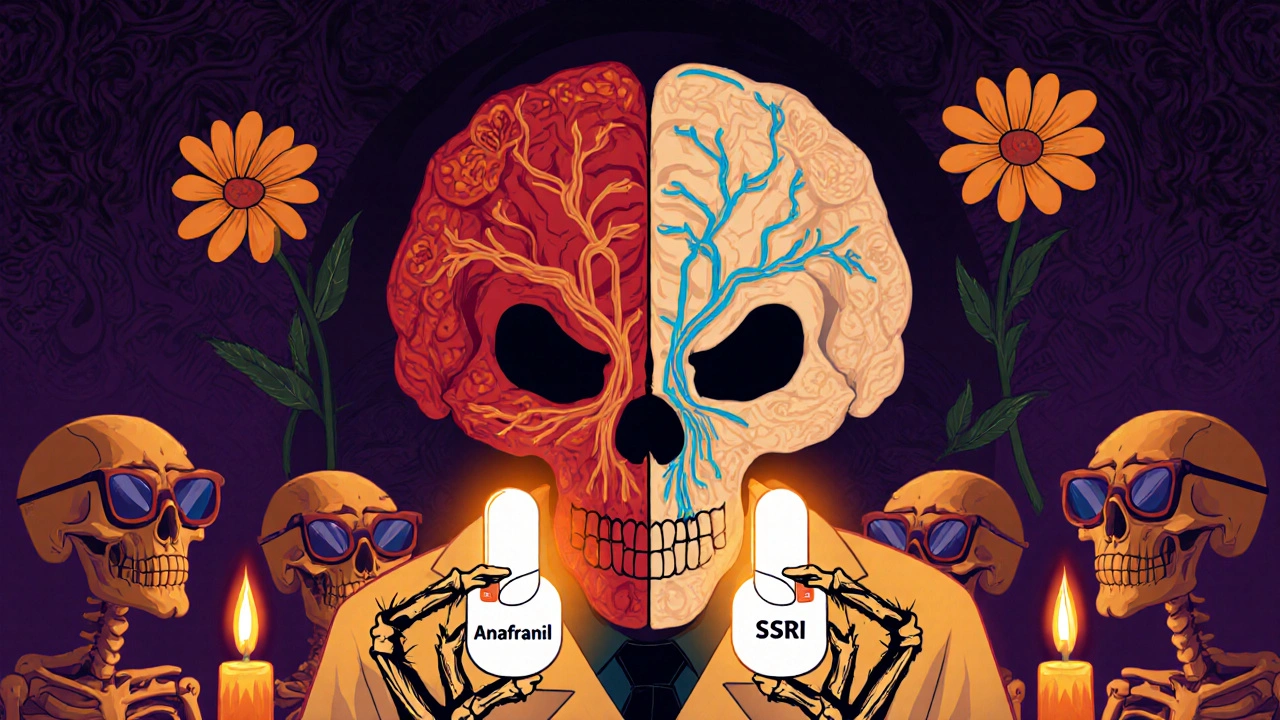When it comes to treating depression, tricyclic antidepressants, a class of medications first developed in the 1950s that work by balancing brain chemicals like serotonin and norepinephrine. Also known as TCAs, they were the first real breakthrough in antidepressant therapy and are still used today—especially when newer drugs don’t work. Unlike SSRIs, which mainly target serotonin, tricyclics hit multiple neurotransmitters at once. That’s why they can help with more than just sadness—they’re also used for chronic pain, anxiety, insomnia, and even bedwetting in kids.
But they’re not simple pills. antidepressant side effects, common issues like dry mouth, drowsiness, weight gain, and dizziness that often show up early in treatment are part of the trade-off. Some people can’t tolerate them because of heart rhythm changes or low blood pressure. That’s why doctors don’t hand them out like candy anymore. Still, for those who’ve tried fluoxetine, sertraline, or even SNRIs without success, TCAs can be the missing piece. They’re not glamorous, but they’re proven. And unlike newer meds, they’ve been around long enough for doctors to know exactly how to adjust doses and manage risks.
What you won’t find in most online ads is that mental health medication, the broader category that includes everything from SSRIs to antipsychotics and mood stabilizers isn’t one-size-fits-all. Some people need a drug that knocks out pain and sleep issues along with depression. That’s where tricyclics still shine. They’re not the first choice anymore, but they’re not obsolete either. If you’ve been on multiple antidepressants and nothing stuck, your doctor might bring them up. It’s not a sign you’ve failed—it’s just another tool in the box.
What’s in the collection below? Real stories and clear breakdowns about how these drugs actually work in daily life. You’ll find comparisons with other meds, tips for handling side effects, what to expect when you start, and how to talk to your doctor if things aren’t clicking. No fluff. No hype. Just facts from people who’ve been there.

Anafranil (clomipramine) is effective for OCD but has tough side effects. Discover how SSRIs like Zoloft and Prozac compare as safer, nearly as effective alternatives - and when Anafranil might still be the best choice.
Learn how specific nutrients, foods, and diet patterns can help prevent hair loss, with practical meal plans, a nutrient checklist, and expert FAQs.
Learn how to safely buy cheap generic Cymbalta online in Canada. Get price comparisons, safety tips, ordering steps, and a FAQ to avoid scams.
In my recent dive into medical research, I stumbled upon a controversial topic: the potential link between Amlodipine, a common high blood pressure medication, and cancer. Several studies have surfaced suggesting a possible association, but the evidence is inconsistent and not yet fully understood. It's essential to remember that correlation does not imply causation, so while this topic definitely warrants further research, there's no need for panic. If you're currently taking Amlodipine, don't stop or change your medication without first discussing it with your doctor. Stay tuned as I continue to monitor this ongoing discussion.
MAFLD is the most common liver disease worldwide-but it’s reversible. Learn how diet, exercise, and weight loss can heal your liver, what treatments actually work, and why most people don’t know they have it.
Explore the top alternatives to Canada Pharmacy Online in 2025, focusing on PocketPills among others. Discover the upsides and downsides of each alternative, including free delivery offers and app-managed prescriptions. This guide helps you make informed choices for your medication needs.